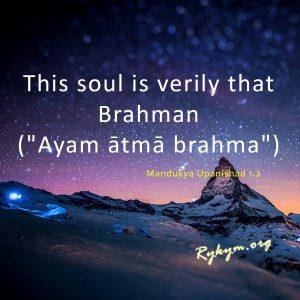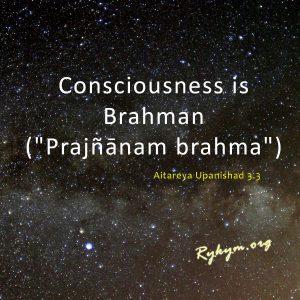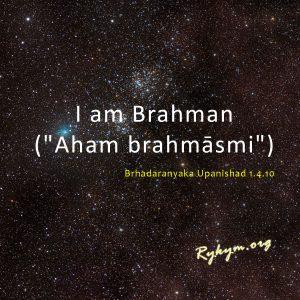from the Upanishads hold profound significance in understanding the ultimate reality and the journey of the soul toward self-realization. Here’s how Kriya Yoga is linked with these powerful statements:
1. "Prajnanam Brahma" (प्रज्ञानं ब्रह्म) – Consciousness is Brahman (Aitareya Upanishad)
In Kriya Yoga, one of the central focuses is to raise awareness of the inner consciousness through controlled breath (pranayama) and meditation. The realization that consciousness is the underlying essence of all existence reflects the meaning of "Prajnanam Brahma." As the practitioner deepens their Kriya practice, they begin to perceive that the pure consciousness they experience during meditation is none other than Brahman (the ultimate reality).
Thus, the yogi realizes that the consciousness within them and the universal consciousness are one and the same.
2. "Aham Brahmasmi" (अहम् ब्रह्मास्मि) – I am Brahman (Brihadaranyaka Upanishad)
As Kriya Yoga develops, the practitioner progresses toward the direct experience of the Self through deep meditation, transcending the ego and individual identity. The realization of "Aham Brahmasmi" occurs when the practitioner experiences a state of non-duality.
Through the techniques of Kriya, one systematically quiets the mind and attains a state where the individual ego dissolves, leading to the recognition of one’s essential nature as Brahman — the infinite, unchanging reality. This is the realization that the individual self (Atman) and the universal self (Brahman) are not separate but one.
3. "Tat Tvam Asi" (तत्त्वमसि) – Thou art That (Chandogya Upanishad)
In Kriya Yoga, the practice is not just about physical techniques but also about inner contemplation and understanding of one’s connection to the divine. "Tat Tvam Asi" conveys the message that the individual soul (Atman) is not separate from the universal soul (Brahman).
As the Kriya Yogi deepens their meditative practice, this Mahavakya becomes a lived reality, where they see beyond the illusion of separation between the individual and the cosmic. In the deepest stages of Kriya meditation, one experiences oneness with all of creation, realizing that "I am That" — the cosmic force that permeates all.
4. "Ayam Atma Brahma" (अयम् आत्मा ब्रह्म) – This Self is Brahman (Mandukya Upanishad)
The practice of Kriya Yoga is ultimately aimed at realizing the true nature of the self. "Ayam Atma Brahma" is the assertion that the individual self (Atman) is not different from the ultimate reality (Brahman). Through regular Kriya practice, the yogi transcends the layers of mind, body, and ego, realizing that their Atman is Brahman — the eternal, infinite reality.
In Kriya Yoga, this realization is cultivated by purifying the body, controlling the mind, and channeling the life force (Prana) through the spine, leading to direct experiences of the oneness of self and the cosmos.
The Essence of Connection:
The four Mahavakyas from the Upanishads represent the core understanding of non-duality (Advaita), which is the ultimate goal of Kriya Yoga. Kriya Yoga serves as a powerful tool to realize these great truths experientially, not just intellectually. By purifying the nervous system, controlling the mind, and attuning oneself to higher consciousness, Kriya Yogis move toward the direct realization of these Mahavakyas, experiencing the oneness of individual self with the universal Brahman.
In this way, Kriya Yoga is a practical path to embody the profound wisdom of the Upanishads. Through disciplined practice, a Kriya Yogi moves closer to the realization that the self (Atman) is, in essence, the same as the ultimate reality (Brahman), aligning with the teachings of the four Mahavakyas.




Tags
- Log in to post comments
